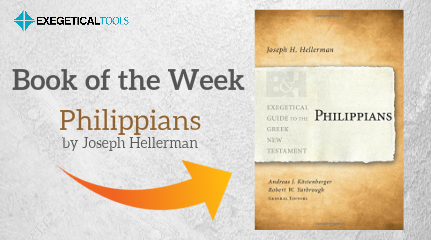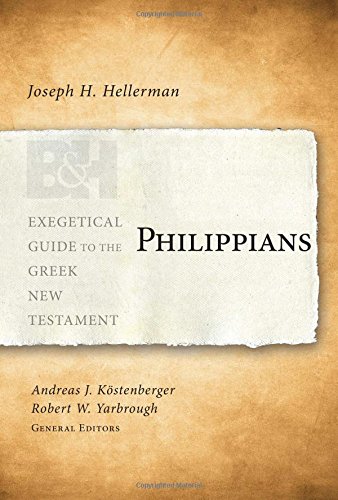
Preparing a sermon on difficult texts can be extremely time-consuming. In Philippians 1, what does Paul mean when he says “I know that through your prayers and the help of the Spirit of Jesus Christ this will turn out for my salvation” (1:19)? How should the difficult Greek phrase τοῦτο φρονεῖτε ἐν ὑμῖν ὃ καὶ ἐν Χριστῷ Ἰησοῦ (2:5) be understood? What does the word ἁρπαγμὸν mean in 2:6? To give one more example, what about everyone’s favorite word in Philippians, σκύβαλα – just exactly how strong is that word?
For each of these exegetical problems, and the many more you would find in almost every paragraph of Philippians, you might need to consult a few commentaries and a couple lexicons, assuming you’re working from the Greek. Perhaps your Greek skills aren’t up to par and you avoid translating the passage yourself. This new series from B&H Academic is designed to solve both problems–to save you loads of time while studying the text and to enable you to work through the Greek phrase by phrase.
Joseph Hellerman’s handbook on the Greek text of Philippians is one of the latest volumes in the Exegetical Guide to the Greek New Testament. We love these volumes so much that we recently featured Murray Harris’ volume on John as the Book of the Week. Hellerman’s is of the same quality as Harris’ and would be useful and appreciated by all who use it.
Throughout this guide, Hellerman gives a stellar analysis of each exegetical problem with various positions taken by commentators and supporting reasons for each position. Some good examples are the following:
- For the meaning of σωτηρίαν, he gives three positions, with six reasons for the first, four for the second, and three for the third, and a final paragraph with his reasons for choosing the third (58-59).
- When analyzing σώματί in Phil 1:20, he cites BDAG, NIDNTT, TDNT, H-M, Fee, Gundry, and Silva. This brief word study (only one paragraph) is deceptively packed with research (64).
- On the difficult phrase “have this mind among you, ὃ καὶ ἐν Χριστῷ Ἰησοῦ (Phil 2:5), he cites the two main positions, whether the ἐν expresses union with Christ that is the grounds for the Philippians having Christ’s mindset, or the location of the mindset as residing also in Christ (108-109). He provides five reasons for the first and two for the second, choosing the second in a small summarizing paragraph.
This sort of analysis is extremely helpful for pastors who need quick syntheses of arguments from the commentators and trustworthy judgment on these arguments. Indeed, as Hellerman told us in our interview with him, his guide is meant to be a one-stop shop for users so they have no need to consult lexicons or commentaries for dealing with the Greek text (of course you will still want commentaries for theology and history). Students may also use Hellerman’s analysis as a model of careful attention to the Greek text.
Hellerman's Philippians is a model of careful attention to the Greek text Share on XHellerman’s volume shares many of the other features that the EGGNT volumes have, including flow diagrams for each passage, suggestions for further reading by organized by topics that arise in each section, and brief comments about the literary makeup of each section after the flow. I still lament the inattention to wider discourse features of the NT books, which is not intended to be covered in these volumes, so one must supplement this lack with other works on discourse analysis, which you can find in our Annotated Bibliography, but especially the Philippians volume in the Semantic Structural Analysis from SIL.
As with the other EGGNT volumes, I commend this as an incredibly helpful resource for anyone preparing to preach or teach on Philippians.
Preview or buy it here in paperback or for Kindle. (Compare the prices, the Kindle edition is currently much cheaper.)




One comment